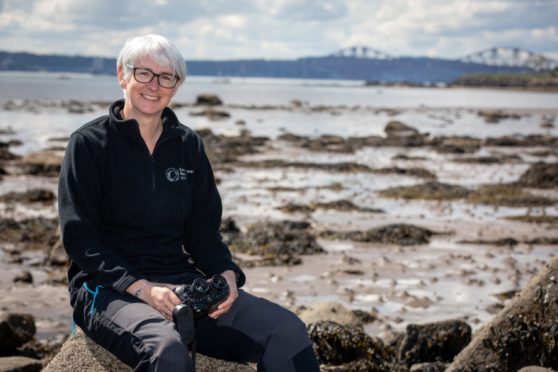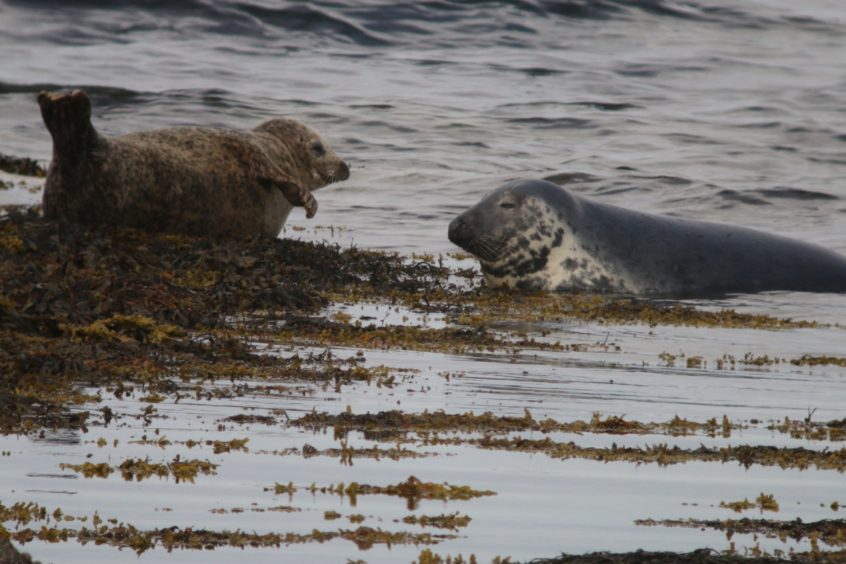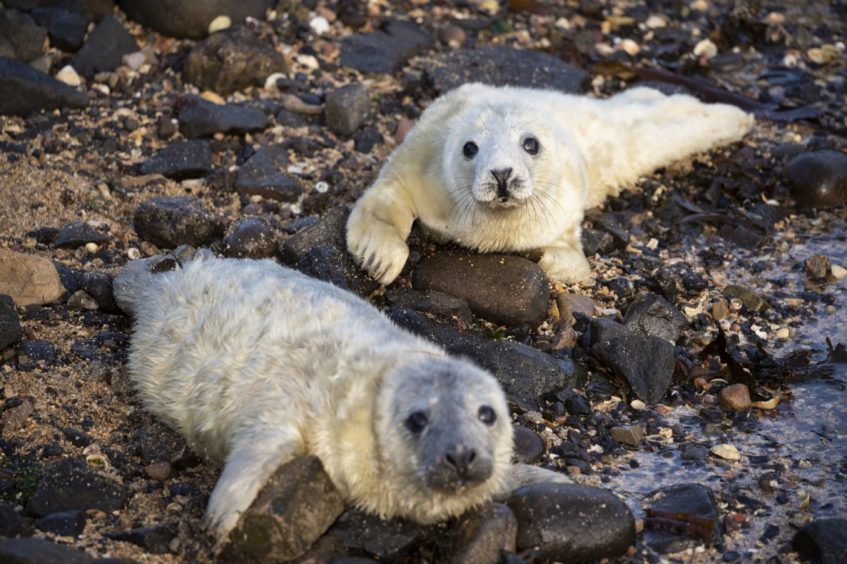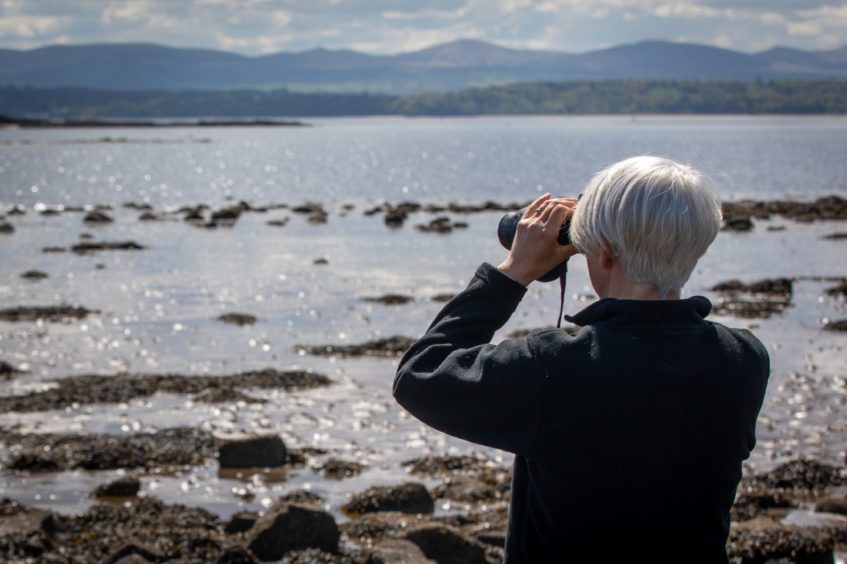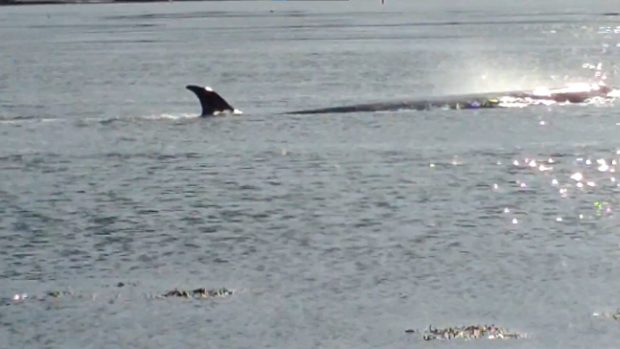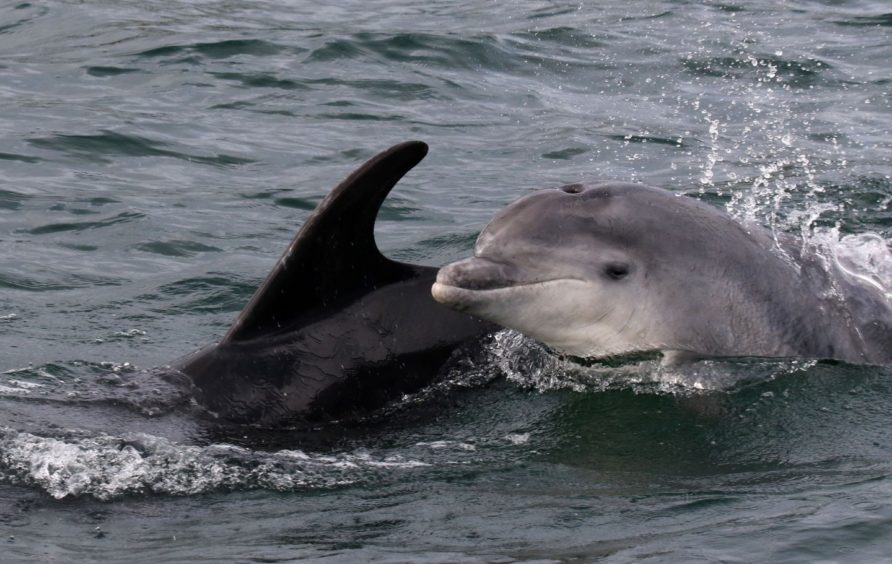Harbour seal numbers in the Tay and Eden estuaries have plummeted by 95% as figures reveal marine mammals are struggling.
According to the latest statistics from government agency NatureScot, marine mammals including seals and cetaceans are at the bottom of the table of species ranked in order of “favourable condition”.
NatureScot said the figure for marine mammals is largely due to the decline in harbour seals — which has been dramatic in Tayside and Fife.
In 2000, the Firth of Tay and Eden Estuary Special Area of Conservation was home to an estimated 700 harbour seals – around 2% of the total UK harbour seal population.
But by 2018 numbers had plummeted to around 40 — a drop of nearly 95%.
Academics at St Andrews University’s Sea Mammal Research Unit are investigating the reasons behind this decline.
Conflict between species
One theory is the increased number of grey seals, which are known to kill harbour seals.
Sea Mammal Research Unit (SMRU) director Dr Carol Sparling said it was likely to be a combination of factors.
“Harbour seals in a number of regions around Scotland have undergone quite a significant decline whereas grey seals, particularly on the east coast, have undergone a massive increase in numbers,” she said.
Harbour seals have also been in decline around the north coast, Orkney and Shetland.
Meanwhile, harbour seal populations on the west coast of Scotland have remained stable or increased.
There’s clearly something going on at adult survival level.”
Dr Carol Sparling, SMRU
“We’ve had this study where we’ve looked at two contrasting populations,” said Dr Sparling.
In Orkney numbers are declining, but on Skye the population is rising, she noted.
“We… try to get a handle on the key difference between those two populations,” she added.
“There’s still no clear picture of exactly what might be causing the decline. It’s likely to be a combination of factors.
“What is clear is that the rate of the decline has been steep enough to understand that there’s clearly something going on at adult survival level.”
Pregnant seals found dead
She added: “We know that locally around the Fife coast there have been quite a few instances of dead harbour seals being found — adult female, and often pregnant, harbour seals that have been victim to grey seal predation.
“The big male grey seals will actually kill adult harbour seals.”
As harbour seals decline, nature spotters are now most likely to see grey seals around the Fife and Tay coasts.
Dr Sparling said: “These days it’s likely to be mainly grey seals, although there are pockets where you will see little groups of harbour seals.
“There’s been a bit of a switch-around, particularly in the Tay, where we used to have a really large population of harbour seals.”
NatureScot says more than three-quarters of Scotland’s natural features — wildlife habitats, species and geological features — are in good condition or on the road to recovery.
Decrease since 2016
But latest statistics suggest there has been a decrease in the proportion of natural features that are doing well across protected sites.
Protected sites include Sites of Special Scientific Interest, Special Areas of Conservation, Special Protection Areas and international Ramsar sites.
According to NatureScot, the proportion of natural features in favourable condition peaked in 2016 at 80.4%. It now sits at 78.3% — half a percentage point less than the previous year.
However, there has been an overall improvement since 2005, when the figure was 71.4%.
Invasive species threat to woodlands
While marine mammals were said to be struggling, the condition of marine habitats fared better. More than 98% were in favourable condition.
Woodlands are facing the most challenges, with the proportion in good condition just 64.3%.
Invasive species were said to be the biggest threat to habitats, followed by over-grazing.
Dr Sparling said the variety of whales and dolphins visiting the Forth suggested there was an abundance of food for marine life in the estuary.
And she said an increased awareness of the value of marine habitats was cause for optimism.
In particular, public interest in recent whale sightings – including the surprising sight of a Sei whale in the Forth – has increased public engagement in marine conservation.
Whales and dolphins are good news
“There’s a local good news story in terms of what’s been happening in the Forth,” said Dr Sparling.
“The number and variety of cetaceans, of whale and dolphin and porpoise species that we’re seeing locally, has increased a lot over the last few years.
What it is doing, particularly for local communities, is increasing awareness of the marine environment.”
Dr Carol Sparling, SMRU
“There must be plenty for them to feed on. I presume the waters are cleaner and there are more fish for them to eat.
“There’s still a lot of shipping activity in the Forth. We can’t rule out that it might be having an effect, the noise of all these big tankers coming in and out. But, what we do know is that it’s not causing them to completely stay away.”
She added: “What it is doing, particularly for local communities, is increasing awareness of the marine environment and value of the marine environment, and the importance of the health of the marine environment.
“People are out there doing beach cleans on a weekly basis, trying to get rid of plastic in the environment.”
Dolphin study
The SMRU is investigating how bottlenose dolphins are expanding their range through their Citizen Fins project.
The project encourages members of the public to submit photographs of any dolphins they see, taking care not to disturb the animals.
National targets could protect habitats
Nick Halfhide, NatureScot’s director of people and nature, said national targets for 30% of Scotland’s land and sea to be within a protected area by 2030 provides a “real opportunity” to reverse nature loss.
He added: “Scotland’s protected areas have a vital role in strengthening ecological networks and helping us to build resilience in the face of the twin challenges of climate change and biodiversity loss.”
